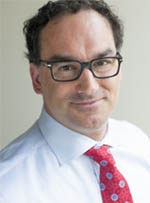Counting hospital error mortality is not straightforward.

This is a summary of Dr Kaveh Shojania's "Reflections on Patient Safety after 15-ish years", a lecture organised by SingHealth's Office of Risk Services on 16 January 2017.
Dr Kaveh Shojania is Director of the Centre for Quality Improvement and Patient Safety at University of Toronto. He is also Editor-in-Chief of BMJ Quality & Safety.
Has patient safety become worse?
In 1999, the Institute of Medicine in the US published "To Err is Human", a report which stated that 44,000 to 98,000 hospital deaths in the US each year were due to hospital errors. Alarm bells were raised, a flurry of reviews were conducted and intervention measures taken.
Fast forward 15 years, a 2016 study claimed that medical errors accounted for 251,000 deaths, or one-third of all hospital deaths, in the US annually. This suggested that after years of effort to improve patient safety, errors now caused five times as many deaths as in 1999.
Has patient safety really become worse? Counting hospital error mortality is not straightforward. A closer look at the 2016 study revealed possible double counting, problematic exclusions and inaccurate attribution of the cause of death. As shown by other studies, a more realistic estimate was less than five percent.
Patient safety is a young field and much work remains to be done. Thus far, there are two basic approaches to understanding and tackling patient safety.
Clinical research approach
In this approach, clinicians establish the epidemiology of errors and adverse events, identify appropriate interventions and develop implementation strategies. However, Medical evidence changes quickly, rendering the interventions ineffective. Measures can lead to new problems or are simply not implemented effectively.
An example is the initial use of perioperative beta-blockers, a type of drug that reduces heart rate and blood pressure, to prevent post-operation cardiac events. More recent clinical studies have revealed that it may not be helping patients much and may even increase mortality.
In addition, new problems occur as medical practices change. For example, the digitisation of medical orders can create new errors due to wrong entries.
The clinical research approach has worked in some areas where very narrow problems were targeted (for example, central line infections). In other areas, it was difficult to implement or did not work well.
Systems approach
The "systems approach" views errors as events set up to fail due to latent or system problems. These can be caused by ineffective organisation structure or policies, instead of unsafe acts by individuals.
Guided by methods used in the aviation industry, it traces the root causes of errors by examining latent failures (such as bad management decisions or lax policies) which affect conditions of work (such as high workload, breakdown in communication, lack of training) which in turn cause the active failures (such as shortcuts and mistakes) resulting in accidents.
In a 2002 case, a wrong patient was sent for another's cardiac procedure. Investigation found that red flags should have been raised at various points during the patients' care, but they were dismissed or not reported. Warnings had lost their value as deviations were common. The investigators identified latent failures that led to the cascade of errors: the hospital's culture of low expectations and poor communication among staff.
System problems are often complex and require substantial investment of resources. In short, they are the hardest to solve. Most investigations lead to superficial changes only. An example is the common use of checklists to reduce errors, which often become "tick box exercises".
A team approach to patient safety
What many failed to realise is that a checklist is a means to an end. Corresponding changes in attitudes, teamwork, communication, culture and leadership are needed to support the changes necessary to improve patient safety.
A study (Neily et al. Oct 2010) showed that investing deeply in medical team training was associated with lower surgical mortality. The US Veterans Health Administration formalized a medical team training program for operating room personnel.
The programme required surgical staff (surgeons, nurses and technicians) to train together as a team, challenge each other when they identify risks, use checklists, conduct debriefings, and improve communication and teamwork skills. It led to a decrease in surgical mortality that was 50% greater than the control group which did not undergo team training.
Improving patient safety requires deep investments in teamwork and culture. When hospital teams work together and truly understand the importance of safety, there is a better chance of success.
